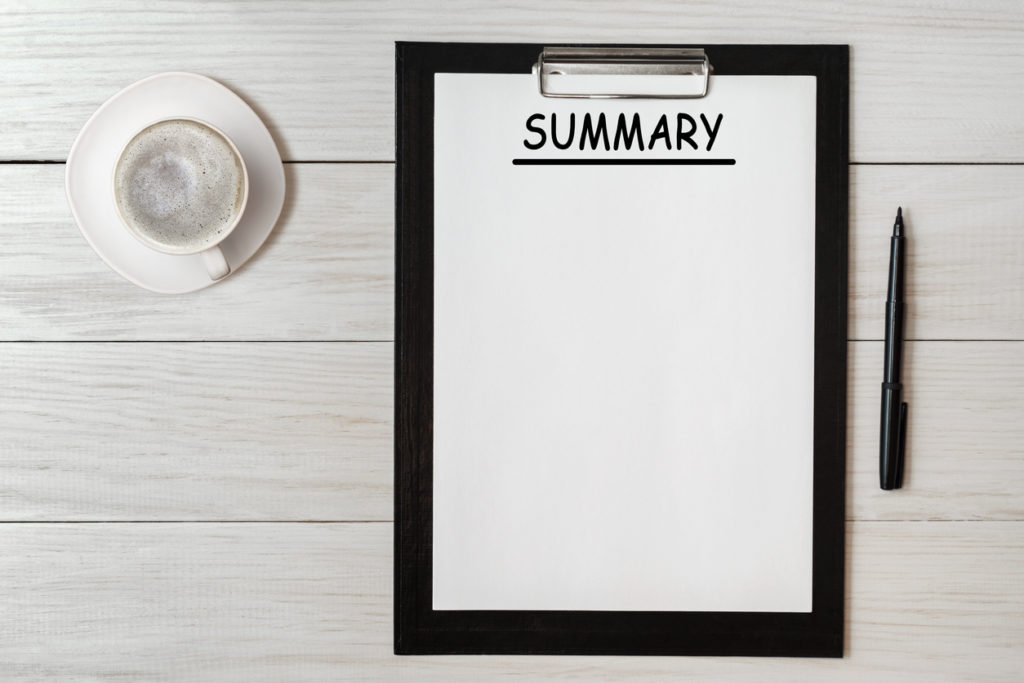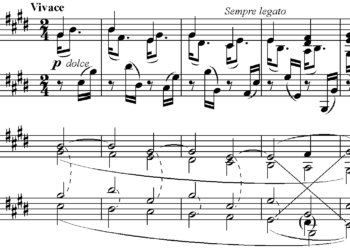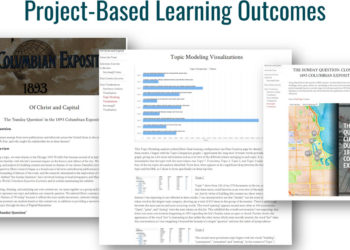Editor’s Note: Today’s post is by Adeline Rosenberg. Adeline is a Medical Writer in the Patient Engagement and Open Pharma teams at Oxford PharmaGenesis. She serves as a rare disease patient advocate on the steering committee for the Oxford Patient Engagement Network for Arthritis and Musculoskeletal Conditions (OPEN ARMS) at the University of Oxford, and is the patient engagement workstream lead for the Social Media and Web-Based Metrics Working Group at the International Society for Medical Publication Professionals (ISMPP). She is also an author of the Open Pharma recommendations for plain language summaries of peer-reviewed medical journal publications.
What is a PLS?
Plain language summaries (PLS) of peer-reviewed medical journal publications are summaries of a piece of published literature that simplify highly-specialized terminology and jargon into language everyone can understand. PLS are intended for everyone engaging with medical research, such as patients, patient advocates, caregivers, healthcare professionals and policymakers. Frequently, they are brief, text-based lay abstracts formatted like, and hosted alongside, the scientific abstract. However, consensus on industry standards for PLS is still in its infancy, so other formats in use across the industry include multi-page visual infographics and digital enhancements, usually hosted in the supplementary materials or on third-party websites.
Despite these variations, PLS are concretely distinct from regulatory trial results summaries (also known as lay language summaries or clinical trial summaries). These are longer summaries of clinical study reports, associated with a specific clinical trial and written specifically with patients and participants in mind, to satisfy the requirements of the EU Clinical Trial Regulation (No. 536/204 Annex V). This blog post focuses on PLS of peer-reviewed medical journal publications. For more information on the differences between the different types of plain language documents, please see “What’s in a name? A Crib sheet for plain language documents“.

Why write a PLS?
Open science is a human right. Article 27 of the Universal Declaration of Human Rights states that “Everyone has the right freely to […] share in scientific advancement and its benefits”. The concept of open science as it relates to financial availability and open access publishing is already well established, and its principles can be seen in action in the likes of preprints, open source data sets, and open peer review reports, among others.
Open science saves lives. The rapid dissemination of freely available medical research and information has proven to be crucial in combatting the COVID-19 pandemic. Just weeks into the initial outbreak, Chinese scientists first sequenced and freely published the SARS-CoV-2 genome, and publishers and journals following traditional subscription-based publishing models committed to publishing COVID-19 content open access. Since then, over 80,000 preprints and peer-reviewed articles on COVID-19 have been published (as of June 2021), catapulting open science principles into regular practice.
But what good is financially available medical research if it is not understandable to the very groups of people who stand to benefit from it, the public? As researchers become more and more siloed in their specialties, the language in which information is shared becomes ever more technical, more jargonistic, and less accessible. Including a PLS with a peer-reviewed publication immediately improves the accessibility of the research and is a first step towards opening the gates of specialized sciences to the public.
Accessible open science improves trust and transparency. At a time when public trust in the pharmaceutical industry is low, transparency is more important than ever, and what’s more transparent than sharing accurate and credible research directly with the public, in language they can understand?
Accessible open science can counter the infodemic. Misinformation is “convenient, accessible, and ubiquitous” and spreads to fill the vacuum left by credible information, which, conversely, is frequently inconvenient, inaccessible, and scarce. In addition to directly tackling misinformation, medical professionals need to also work to ensure that credible, high-quality information is just as “convenient, accessible, and ubiquitous” as misinformation, to prevent the vacuum in the first place.
Providing increased accessibility to medical research to a broad audience allows specialists and non-specialists alike to engage in discussion, and, in the case of patient care, enables informed and shared decision-making.
Why do we need a standard for PLS?
Standardization of industry procedures and codes of practice are “all around us” to help ensure functionality, safety and consistency. In medical publishing alone, we follow standards and codes from the likes of the ABPI, EFPIA, the EQUATOR network, GPP3, the ICMJE and more. Standards help ensure quality; since the introduction of the CONSORT guidelines, the reporting of randomized controlled trials in the published literature has improved in completeness and in quality. As a component of medical publishing, shouldn’t PLS therefore also be subject to such systems of ensuring functionality, safety, consistency, and quality?
Uptake of PLS has been historically slow, largely owing to concerns regarding compliance with direct-to-patient marketing and promotional practice regulations. Consensus on PLS standards will help build industry confidence in PLS as credible and compliant means of communication. This assurance could be further established by widening the target audience of PLS to be more inclusive of any stakeholder seeking clear language and by incorporating PLS into the “safe harbor” of peer review.
There are already efforts across the industry to establish such a consensus. This includes existing initiatives that provide detailed guidance on plain language best practices, co-creation methods, patient-focused content, graphic and digital considerations, and publisher-specific guidelines (see the resources at the end for more). However, a baseline standard is still needed that outlines the minimum steps required to develop credible and compliant PLS, discoverable within the scope of the online platforms and systems that currently exist. With a universal, foundational standard in place, publications are then in a strong position to also include graphic or digital enhancements, or summaries written for more specific target audiences to help increase understanding and engagement.
How and why were the recommendations developed?
Open Pharma is a multi-sponsor collaboration of pharmaceutical companies, non-pharmaceutical funders, publishers, patients, academics, regulators, editors, and societies seeking to identify and drive positive changes in the publishing of pharmaceutical company-funded research.
The need for clarity and alignment within the industry on PLS was initially raised by the Open Pharma Members and Supporters and was highlighted as a critical undertaking. The draft recommendations were developed by the Open Pharma Accessibility workstream and were extensively reviewed and refined during an expert roundtable and a focused, public consultation throughout the first half of 2021. They were drafted keeping in mind both the audiences who are engaging with PLS, as well as authors, sponsors, and publishers who may be considering the scope and scalability of including PLS in publication plans or publication enhancement options.
What do the Open Pharma recommendations look like?
The Open Pharma recommendations provide a baseline foundation to level the playing field with guidance for PLS that (1) are fit for purpose and consider end user needs, and (2) are cost-effective and easy to deliver, based on what is feasible for publishers, sponsors and authors.
Our recommendations advocate PLS that are accessible, clear, understandable, and inclusive of multi-stakeholder audience types. This ‘reader-agnostic’ approach acknowledges the multiple stakeholder groups who benefit from plain language summaries, including, but not limited to, non-specialist or time-challenged healthcare professionals, policymakers, the media and the public, caregivers, patients and patient advocates, or those whose first language is different to that of the summary. As a minimum standard, writing for a broad and inclusive audience avoids making assumptions about readership. However, this is only a minimum, and there are many scientific communications that would benefit from an additional PLS developed with a more specific target audience in mind.
Our recommendations also call for PLS that are directly discoverable and findable instead of being buried in supplementary materials or multiple clicks away on third-party websites. PubMed is one of the most widely-used public databases of medical literature and already has an built-in function for hosting PLS. To be indexed on PubMed, a PLS needs to be text-based and concise — we recommend of 250 words or fewer — and tagged accordingly when uploaded by publishers.Therefore, the Open Pharma recommendations advise that PLS should meet these technical requirements. We do recognize, however, that PubMed is not an ideal platform for all stakeholders, and we would welcome future development of a central database for PLS that can match PubMed’s discoverability while providing more options for different content formats, such as infographics and videos to increase understanding and engagement.
Other key points from the recommendations highlight that PLS should be peer reviewed for quality and credibility, and published open access for financial availability.
Ultimately, our recommendations describe but don’t prescribe. They do not seek to detail the different variations in purposes and formats of PLS that can be included in addition to the minimum, and they are not intended to be an in-depth educational material as this function is already proficiently covered by other health literacy initiatives.
More PLS resources
- A dedicated PLS website from the Future Science Group
- Publisher-specific guidelines such as this example from Taylor & Francis
- Guidelines for co-creating PLS with patients as partners from Patient Focused Medicines Development
- Results from multi-stakeholder insights of key PLS questions from the International Society for Medical Publication Professionals working group
- A clinical research glossary from the Multi-Regional Clinical Trials Center
Discussion
2 Thoughts on "Guest Post — Towards Standardizing Plain Language Summaries: The Open Pharma Recommendations"
I don’t think so. Popularizing technical literature is a difficult job. See https://scholarlykitchen.sspnet.org/2013/02/20/open-access-2-0-access-to-scholarly-publications-moves-to-a-new-phase/
I agree. You need to work with experts in summarising complex content into clear, concise and compelling digital stories.
PLS are a welcome move, and they are best delivered by solutions such as digital summarisation experts like SciencePOD.net, which rely on a global network of medical and science writers to deliver PLS, with the right therapy expert writing using the right words for wider audiences.
Find out more: https://www.youtube.com/watch?v=fL19zGDm018



